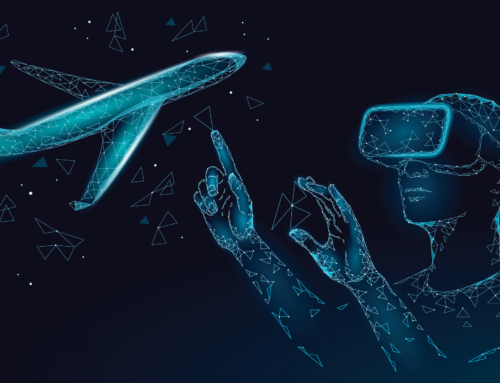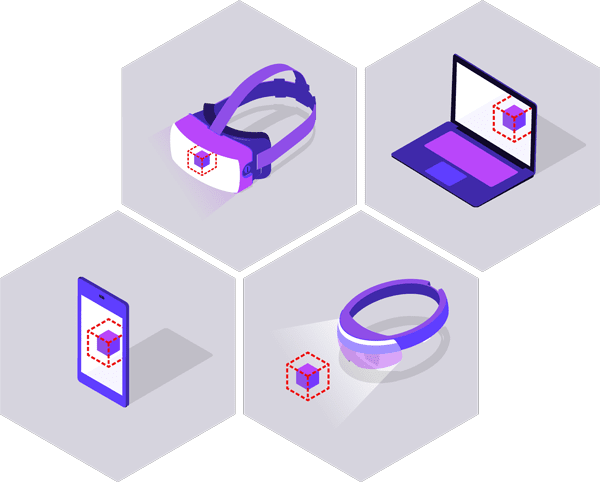Key Takeaways
What is a distributed team?
As the name suggests, a distributed team is a term used for teams physically located away from each other. You could be working from your living room, in a serviced office or perhaps in a coffee shop. But in all instances, you are not based near any other colleague.
Features of distributed teams
For your distributed team to succeed, you’ll need to implement these features.
1. Choose the right team
One of the challenges of running a distributed team is finding the right staff. First and foremost, your team members are physically on their own. And for that reason, there’s a great deal of trust that they will carry out their roles to the best of their ability.
To do so, an employee must have certain characteristics. The first being that they’re self-motivated, autonomous and keen to accept the responsibility that comes with their roles.
Our advice? Invest the time and money to implement a watertight recruitment process. You won’t regret it.
2. Clarify roles and responsibilities
Whether you’re inheriting a team or building a distributed team from the ground up, provide clarity around individual roles and responsibilities.
These can be communicated in employee contracts, shared team documents and also in one-to-one and team meetings. You can also create a culture where colleagues feel free to ask for clarity on anything they’re not sure about. This is especially important in a distributed team where there’s a risk of feeling isolated from colleagues.
3. Specify communication channels
We’ve all been there when an important message hasn’t been received. In some instances, it can cause a huge impact on the productivity of your business as well as lose you time and money.
So, to limit the chance of missed communication in your distributed team, clearly specify which channels you expect colleagues to use, whether it’s email, Slack or something completely different. The fewer the better.
Distributed teams vs. remote teams
A distributed team and a remote team are very similar. The only difference being that a remote team member may not always work independently.
That’s because a remote team is a mixture of office-based workers and remote workers based anywhere in the world.
For example, you could be a recruitment team based in central London, but you have other colleagues based around the globe with the view to expand internationally.
It’s also worth mentioning that, unlike a remote team, a distributed team has no physical office space. To some, this is seen as an advantage because it keeps team members on a level playing field. There’s no fear of missing out (FOMO).
Benefits of distributed teams
1. Faster scaling and growth
By not restricting your business to a centralised office, you open your doors to international recruitment.
This means you have a greater pool of talent applying for positions, as well as a stronger chance of recruiting the best candidates from around the world.
The flexibility of a distributed team also means you can attract freelance and contract talent, potentially saving you time and money, as well as giving you instant access to top talent.
2. Save money on renting an office
Opting for a distributed team means you don’t waste thousands of pounds on rent each month.
What’s more, money you save on running a distributed team can be repurposed to offer remote perks for your team members.
This is an option that’s been employed by companies like Buffer who improve team culture by offering annual employee retreats and other face-to-face team activities.
3. Ditch the distractions
We all know that working in a shared space can be distracting and, in some cases, it can seriously restrict the potential productivity of a business.
However, working from a remote location gives colleagues the opportunity to get in the zone, block out distractions and distance themselves from those all-too-familiar unproductive colleague conversations.
In fact, the Harvard Business Review reported an increase of 13.5% in productivity when employees worked remotely. When you add to the equation the time saved from needless commuting, the numbers really aren’t surprising.
4. Keep your business open for longer
Depending on the locations of your distributed team members, you might have the flexibility to implement a ‘follow the sun’ working structure.
It means employees in varying time zones can keep your business open more hours of the 24-hour period, allowing you to provide a faster and more convenient service to your customers.
5. Promote the wellbeing of your staff
Choosing to run your business from a dedicated office means colleagues are restricted to live within a certain radius of their workplace.
For some, this isn’t a problem and, in fact, many people prefer a structure with a clear geographical divide between home and work life. But for others, the freedom to work from a remote location is a priority.
Not only does it mean you can live anywhere in the world without risk of losing your job, but you also have the freedom to choose the working environment that suits your needs.
Whether that’s a home office, coffee shop or perhaps sitting on the beach, it’s entirely your call. Just make sure there’s WiFi!
Tools for distributed teams
In recent years, many distributed teams around the world have used virtual reality (VR) to create a digital workspace.
Not only does it allow teams to communicate, but it gives them the opportunity to explore and interact with three-dimensional representations of products, equipment and services relevant to their industry.
In the same VR space, colleagues can partake in team-building events to create a happier and healthier morale.
For businesses serious about transitioning to a distributed team, VR opens unlimited opportunities to create a high-performing global business.
It’s one of the reasons the global AR and VR market is expected to grow to $209.2 billion by the end of 2022. Businesses know it works.
At this point, you might be wondering whether VR is exclusive to large corporates with generous budgets. The answer is ‘no’ and – depending on your requirements – implementing VR may be more affordable than you think.
At Future Visual, we offer technology such as our VISIONxR™️ technology that makes implementing VR in your distributed team quick and simple.
So, are distributed teams the future?
Since the pandemic, many businesses have realised that the expense of a dedicated office is not necessary for their business to operate.
In doing so, business owners willing to move to a distributed team have looked for more immersive ways to communicate with their team beyond standard video calls.
For many, the answer has been VR. It provides a dedicated digital workspace where teams can collaborate, problem-solve and feel part of a team – even though they might be thousands of miles apart.
Want to know more about how our VR technology can support your distributed team? Fill in our quick and easy contact form and we’ll get straight back to you.
Key Takeaways
What is a distributed team?
As the name suggests, a distributed team is a term used for teams physically located away from each other. You could be working from your living room, in a serviced office or perhaps in a coffee shop. But in all instances, you are not based near any other colleague.
Features of distributed teams
For your distributed team to succeed, you’ll need to implement these features.
1. Choose the right team
One of the challenges of running a distributed team is finding the right staff. First and foremost, your team members are physically on their own. And for that reason, there’s a great deal of trust that they will carry out their roles to the best of their ability.
To do so, an employee must have certain characteristics. The first being that they’re self-motivated, autonomous and keen to accept the responsibility that comes with their roles.
Our advice? Invest the time and money to implement a watertight recruitment process. You won’t regret it.
2. Clarify roles and responsibilities
Whether you’re inheriting a team or building a distributed team from the ground up, provide clarity around individual roles and responsibilities.
These can be communicated in employee contracts, shared team documents and also in one-to-one and team meetings. You can also create a culture where colleagues feel free to ask for clarity on anything they’re not sure about. This is especially important in a distributed team where there’s a risk of feeling isolated from colleagues.
3. Specify communication channels
We’ve all been there when an important message hasn’t been received. In some instances, it can cause a huge impact on the productivity of your business as well as lose you time and money.
So, to limit the chance of missed communication in your distributed team, clearly specify which channels you expect colleagues to use, whether it’s email, Slack or something completely different. The fewer the better.
Distributed teams vs. remote teams
A distributed team and a remote team are very similar. The only difference being that a remote team member may not always work independently.
That’s because a remote team is a mixture of office-based workers and remote workers based anywhere in the world.
For example, you could be a recruitment team based in central London, but you have other colleagues based around the globe with the view to expand internationally.
It’s also worth mentioning that, unlike a remote team, a distributed team has no physical office space. To some, this is seen as an advantage because it keeps team members on a level playing field. There’s no fear of missing out (FOMO).
Benefits of distributed teams
1. Faster scaling and growth
By not restricting your business to a centralised office, you open your doors to international recruitment.
This means you have a greater pool of talent applying for positions, as well as a stronger chance of recruiting the best candidates from around the world.
The flexibility of a distributed team also means you can attract freelance and contract talent, potentially saving you time and money, as well as giving you instant access to top talent.
2. Save money on renting an office
Opting for a distributed team means you don’t waste thousands of pounds on rent each month.
What’s more, money you save on running a distributed team can be repurposed to offer remote perks for your team members.
This is an option that’s been employed by companies like Buffer who improve team culture by offering annual employee retreats and other face-to-face team activities.
3. Ditch the distractions
We all know that working in a shared space can be distracting and, in some cases, it can seriously restrict the potential productivity of a business.
However, working from a remote location gives colleagues the opportunity to get in the zone, block out distractions and distance themselves from those all-too-familiar unproductive colleague conversations.
In fact, the Harvard Business Review reported an increase of 13.5% in productivity when employees worked remotely. When you add to the equation the time saved from needless commuting, the numbers really aren’t surprising.
4. Keep your business open for longer
Depending on the locations of your distributed team members, you might have the flexibility to implement a ‘follow the sun’ working structure.
It means employees in varying time zones can keep your business open more hours of the 24-hour period, allowing you to provide a faster and more convenient service to your customers.
5. Promote the wellbeing of your staff
Choosing to run your business from a dedicated office means colleagues are restricted to live within a certain radius of their workplace.
For some, this isn’t a problem and, in fact, many people prefer a structure with a clear geographical divide between home and work life. But for others, the freedom to work from a remote location is a priority.
Not only does it mean you can live anywhere in the world without risk of losing your job, but you also have the freedom to choose the working environment that suits your needs.
Whether that’s a home office, coffee shop or perhaps sitting on the beach, it’s entirely your call. Just make sure there’s WiFi!
Tools for distributed teams
In recent years, many distributed teams around the world have used virtual reality (VR) to create a digital workspace.
Not only does it allow teams to communicate, but it gives them the opportunity to explore and interact with three-dimensional representations of products, equipment and services relevant to their industry.
In the same VR space, colleagues can partake in team-building events to create a happier and healthier morale.
For businesses serious about transitioning to a distributed team, VR opens unlimited opportunities to create a high-performing global business.
It’s one of the reasons the global AR and VR market is expected to grow to $209.2 billion by the end of 2022. Businesses know it works.
At this point, you might be wondering whether VR is exclusive to large corporates with generous budgets. The answer is ‘no’ and – depending on your requirements – implementing VR may be more affordable than you think.
At Future Visual, we offer technology such as our VISIONxR™️ technology that makes implementing VR in your distributed team quick and simple.
So, are distributed teams the future?
Since the pandemic, many businesses have realised that the expense of a dedicated office is not necessary for their business to operate.
In doing so, business owners willing to move to a distributed team have looked for more immersive ways to communicate with their team beyond standard video calls.
For many, the answer has been VR. It provides a dedicated digital workspace where teams can collaborate, problem-solve and feel part of a team – even though they might be thousands of miles apart.
Want to know more about how our VR technology can support your distributed team? Fill in our quick and easy contact form and we’ll get straight back to you.































